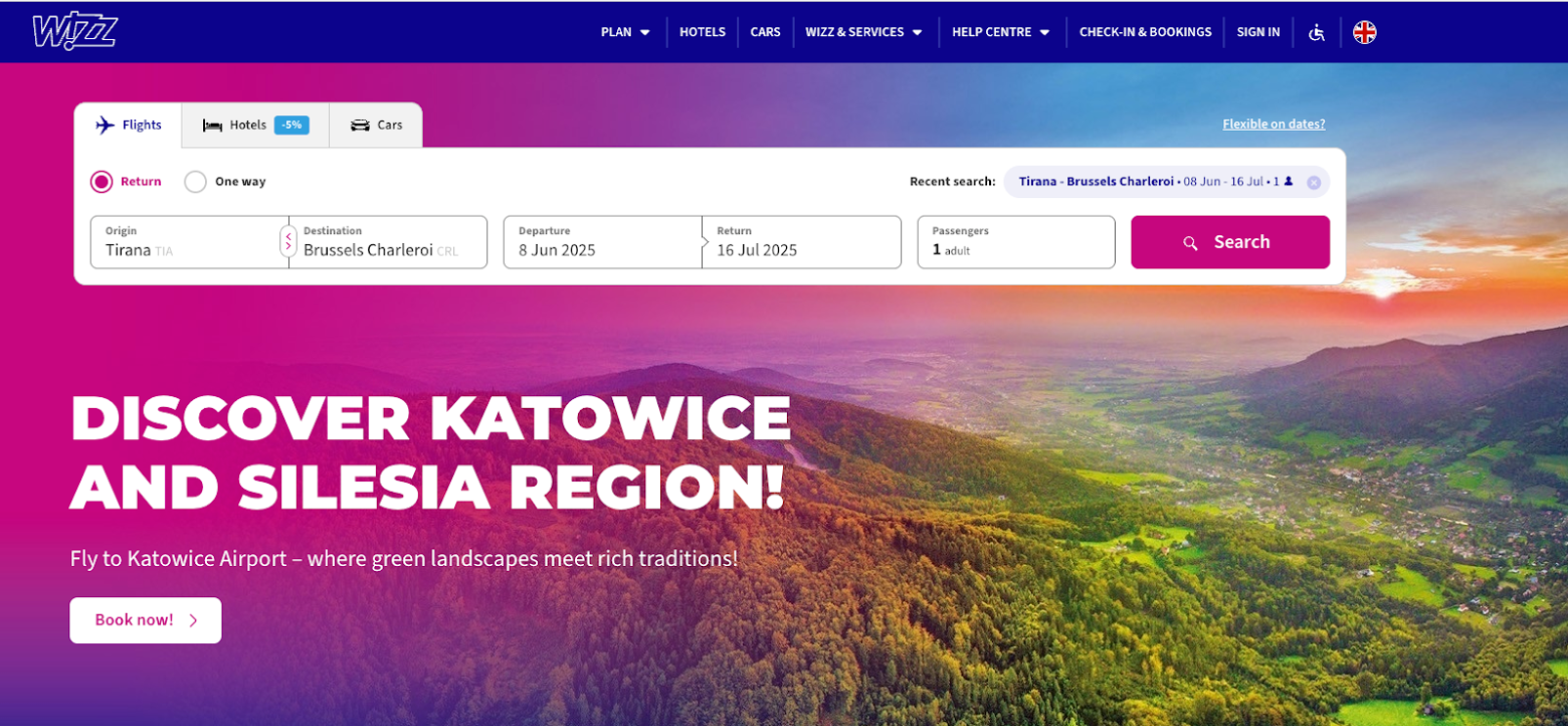Have you ever wondered why some travel platforms help you find the perfect hotel in just a few clicks, while others leave you scrolling through offers for hours that don’t match what you’re looking for? Or why certain websites can suggest exactly the attractions you’ve been dreaming about before you’ve even had a chance to describe them?
The secret lies in searchandising – a strategic approach to managing search results that combines advanced technology with specific business goals. Unlike traditional search engines that only show the most relevant results, searchandising actively guides users toward offers that are strategically important for your business – promoting partners, higher margins, or current campaigns you’re running.
In this article, you’ll learn how searchandising works in practice using examples from the tourism industry, what specific features allow you to manage search results strategically, and how to use these tools to increase conversions and revenue in your travel business.
What is Searchandising?
Searchandising, also known as search merchandising, is the process of smartly organizing and personalizing search results to respond to user queries and primarily support a company’s business objectives. It combines advanced search functionality with strategic merchandising.
In traditional brick-and-mortar stores, owners can arrange their space and display products to attract customers’ attention and direct them toward specific purchases. Searchandising brings this philosophy into the digital world, allowing companies to “arrange” search results like an experienced salesperson arranges merchandise on shelves.
Searchandising goes far beyond simple keyword searches. It’s an advanced system that combines:
- Search functionality – traditional search bars, navigation, filters
- Innovative technologies – artificial intelligence, natural language processing (NLP), user behavior analysis
- Strategic merchandising – deliberately promoting specific products (such as those with higher margins, new items, or excess inventory), organizing results according to business goals like increasing revenue or clearing warehouse stock
The main goal of searchandising is to transform ordinary searching into a personalized shopping experience that actively guides users through the conversion path. Unlike traditional AI-based search, searchandising doesn’t just find what customers are looking for – it strategically directs them toward the offers that matter most to your business and specific sales objectives.
Why is Searchandising Important?
On-site search is one of the most important features users rely on when looking for products. What’s more, according to eConsultancy research, people who use search convert more frequently than other users, showing their higher purchase intent.
Today’s customers (especially younger generations like Millennials and Gen Z) expect brands and retailers to connect them with products that reflect their unique tastes and needs, regardless of how they explore a website. Without control over which products appear in search results, navigation, or filters, creating personalized shopping experiences that truly resonate with customers is difficult.
The problem is that for many companies, search remains a “black box.” Business owners and site operators often have no control over their search engine, which means they don’t know why products are ranked in a certain way, they have to rely on developers when making ranking changes, and they struggle to get good search analytics to make informed decisions.
In traditional e-commerce, searchandising works like an intelligent salesperson who knows their customers. For example, when you search for “gloves,” the system analyzes your purchase history – if you regularly buy sports equipment, you’ll see boxing gloves at the top of the results instead of winter gloves.
A store can also strategically promote products it wants to sell – for instance, those with higher margins or excess inventory. It’s no accident that when searching for “laptop,” we often see accessories or extended warranties – that’s searchandising in action.
Searchandising enables companies to take full control over search by personalizing results based on user history, strategically promoting products according to business goals, intelligently suggesting complementary products, and adjusting results to seasonal trends. The system also works through advanced analytics, allowing companies to optimize user experiences continuously. This way, businesses can create experiences that are both useful for customers and profitable for the company.
How Does Searchandising Work?
Searchandising functions by combining standard search rules with business-specific rules. This means that basic search engine algorithms are enhanced with an additional layer of business logic that allows results to be tailored to a company’s specific goals.
In practice, the system overlays merchandising rules onto basic search mechanisms. This allows a company to dynamically respond to business needs by promoting, boosting, or hiding specific products for particular search queries. For example, during a seasonal sale, the system can automatically display discounted products at the top of the results, regardless of their normal ranking.
Advanced searchandising goes even further, using analytics data from the search engine to better understand user trends and intentions. The system analyzes queries that don’t produce good results, identifies popular topics, and adjusts keyword merchandising to better guide users toward what truly interests them.
Searchandising in Tourism: Key Features
Searchandising consists of many functionalities that together create a search system strategically controlled by the business. In the tourism industry, these features take on special significance due to the complexity of offerings and the emotional nature of travel.
Let’s focus on specific examples from the tourism industry to show how each of these features can impact your customers’ experiences and business results. Some of them work behind the scenes, completely invisible to users, while others are clearly visible to customers using your site.
Strategic Result Personalization
The system doesn’t just remember user preferences – it consciously directs them toward strategically important offers for your business. If a user frequently browses five-star hotels, when searching for “hotel Krakow,” they’ll see not only luxury properties but primarily those that offer the highest commissions or are your strategic partners.
Merchandising Rules
These are detailed instructions for the system that determine what to promote and hide in search results according to your business goals. You can decide that all searches related to Greece should first show islands that generate the highest commissions or partner hotels. This is your conscious business decision that allows you to influence what offers customers see at any moment precisely.
Boost and Bury
These functions allow you to precisely strengthen the position of some results or hide them at the bottom of the list based on clearly defined business criteria. If a hotel has poor reviews but offers high commission, you can strategically promote it higher in search results. On the other hand, if a property generates many customer complaints or is no longer available, you can immediately lower its position in search results.
Filter Organization and Faceted Search
The system not only intelligently organizes filters and implements advanced faceted search, but it can also actively promote those categories and filtering options most financially profitable for you. Faceted search allows customers to use multiple filters simultaneously (price + location + amenities), but additionally, a travel company can consciously control which facets are most visible and suggested. When searching for hotels in Zakopane, you can deliberately highlight filters leading to more expensive options like “spa and wellness” or “boutique hotels,” effectively directing customers toward higher price segments and increasing average transaction value.
Banners and Promotions in Results
This seemingly simple and obvious functionality significantly impacts customers’ purchasing decisions. It enables the strategic placement of promoted content and special offers directly in search results. When customers search for “vacations in Greece,” they can immediately see a banner with your current “Exclusive Islands -30%” campaign or a promoted package you particularly want to sell during that period. This allows for immediate redirection of the customer’s attention to the most profitable offers for you.

The screenshot above from the Wizz Air website shows an interesting example of merchandising in practice. The system displays a large, attractive banner on the homepage: “DISCOVER KATOWICE AND SILESIA REGION!”
We can assume the banner isn’t random – Wizz Air is likely strategically promoting Katowice for specific business reasons. This might be a destination where the airline has higher margins, greater seat availability to sell, or simply wants to increase traffic on that route. It’s also possible that this is part of a broader marketing campaign promoting Polish destinations.
Seasonal Campaign Management
The system allows you to dynamically and globally adjust search priorities according to your company’s campaigns and sales strategy. Suppose you have excess seats to Turkey or are running a special promotion. In that case, you can flip a single switch to make all searches favor Turkish destinations for a specific period, thereby maximizing the effectiveness of your marketing campaign.
Searchandising – The Future of Search in Tourism
Implementing searchandising in a travel company is a strategic investment in the future of your business. The key features described in this article allow you not only to better serve customers, but primarily to consciously direct them toward the most profitable offers.
Want to see searchandising in action? Qtravel Search is an advanced solution created specifically for the tourism industry that combines the most important functions discussed in this article into one system. Try the Qtravel Search Demo and see how searchandising can increase conversions and revenue in your company.
